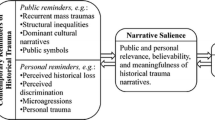Abstract
This qualitative study examines the interaction and tensions between Western medicine and traditional Chinese medicine (TCM) from the perspective of Chinese immigrant practitioners residing in British Columbia. The study also examines (a) how immigration affects TCM practice in BC, (b) the role of legislation in standardizing TCM practice, (c) official barriers crected by government and the medical establishment, and (d) the role of local communities in negotiating TCM services in BC. The findings identify barriers in TCM practice, integration, and research, and suggest that professionalization could create a common ground for interaction and integration between the two systems.
Résumé
Cette étude qualitative porte sur l’Interaction et les tensions entre la médecine de l’Ouest et la médecine chinoise traditionnelle (MCT) du point de vue d’immigrants chinois qui sont médecins praticiens en Colombie britannique. L’étude se penche également sur (a) l’influence de l’immigration sur la pratique de la MCT en Colombie britannique; (b) le rôle de la législation dans la standardisation de la pratique de la MCT; (c) les obstacles officiels mis en place par le gouvernement et le corps médical; et (d) le rôle des communautés locales dans la négociation des services de MCT en Colombie britannique. Les conclusions indiquent qu’il existe des obstacles sur plusieurs plans: la pratique de la MCT, l’intégration et la recherche. De plus, elles donnent à penser que la professionnalisation pourrait créer un terrain d’entente permettant l’interaction et l’intégration des deux systèmes.
Similar content being viewed by others
References
Abbott, A. (1998). Professionalism and the future of librarianship. Library Trends, 46 (3), 430–443.
Advisory Group on Complementary and Alternative Health Care. (2001) Perspectives on complementary and alternative health care. Discussion paper. Ottawa: Health Systems Division, Health Policy and Communications Branch, Health Canada.
Altman, D. (1994). The scandal of poor medical research. British Medical Journal, 308, 283–284.
Astin, J.A. (1998). Why patients use alternative medicine: Results of a national study. Journal of the American medical Association, 279, 1548–1553.
Astin, J.A., Marie, A., Pelletier, K.R., Hansen, E., & Haskell, W.L. (1998). A review of the incorporation of complementary and alternative medicine by mainstream physicians. Archives of Internal Medicine, 158, 2303–2310.
Barnes, L.L. (1998). The psychologizing of Chinese healing practices in the United States. Culture, Medicine, and Psychiatry, 22, 4123–443, 1998.
Bodeker, G.C. (2001). Traditional health systems and national policy. Research Council for Complementary Medicine [On-line]. Available: http://www.rccm.org.uk/static/Article_Gerry_Bodeker.asp
Bower, J., Gurevich, M., & Mathieson, C. (in press). (Con)tested identities: Bisexual women reorient sexuality. Journal of Bisexuality.
Browne, A.J. (2000). The potential contributions of critical social theory to nursing science. Canadian Journal of Nursing Research, 32 (2), 35–55.
Carmon, N. (Ed.). (1996). Immigration and integration in post-industrial societies: Theoretical analysis and policy-related research. New York: St. Martin’s Press.
Chi, D., Lee, J., Lai, J., Chen, C., Chang, S., & Chen, S. (1996). The practice of Chinese medicine in Taiwan. Social Science and Medicine, 43(9), 1329–1348.
Crellin, J.K., Andersen, R.R., & Connor, J.T.H. (1997). Alternative practices, past and present. Alternative health care in Canada: nineteenth- and twentieth-century perspectives. Toronto, ON: Canadian Scholars’ Press.
Crellin, J., & Ania, F. (2002). Professionalism and ethics in complementary and alternative medicine. London: Haworth Integrative Healing Press.
Cunningham, A., & Andrews, B. (Eds.). (1997). Western medicine as contested knowledge. New York: Manchester University Press.
Eisenberg, D.M., Kessler, R.C., Foster, C., Norlock, F.E., Calkins, D.R., & Delbanco, T.L. (1993). Unconventional medicine in the United States—Prevalence, costs, and patterns. New England Journal of Medicine, 328, 246–252.
Eisenberg, D.M., Davis, R.B., Ettner, S., Appel, S., Wilkey, S., Van Rompay, M., & Kessler, R.C. (1998). Trends in alternative medicine use in the United States 1900–1997: Results of a follow-up national survey. Journal of the American Medical Association, 280, 1569–1575.
Fetterman, D.M. (1998). Ethnography: Step by step (2nd ed.). Thousand Oaks, CA: Sage.
Hoffman, C. (2001). Integrated medicine conference report: Can alternative medicine be integrated into mainstream care? Complementary Therapies in Nursing and Midwifery, 7, 110–114.
James, D. (1998). Conventional and unconventional medicine: Can they be integrated? Archives of Internal Medicine, 158, 2179–2181.
LaValley, J.W., & Verhoef, M.J. (1995). Integrating complementary medicine and health care services into practice. Canadian Medical Association Journal, 153, 45–49.
Li, P. (2003). Destination Canada: Immigration debates and issues. Toronto, ON: Oxford University Press.
Micozzi, M.S. (2002). Culture, anthropology, and the return of “complementary medicine”. Medical Anthropology Quarterly, 16, 398–414.
Moulton, D. (1994). Complementary medicine newest member of NSMS. Medical Post, 30 (February 15), 6.
O’Connor, A.M. (1995). Validation of a decisional conflict scale. Medical Decision Making, 15, 25–30.
Owen, D.K., Lewith, G., & Stephens, C.R. (2001). Can doctors respond to patients’ increasing interest in complementary and alternative medicine?, British Medical Journal, 322, 154–158.
Ruedy, J., Kaufman, D.M., & MacLeod, H. (1999). Alternative and complementary medicine in Canadian medical schools: A survey. Canadian Medical Association Journal, 160, 816–817.
Statistics Canada. (2003). Population [On-line]. Available: http://www.statcan.ca/start.html.
Stenner, P. (1993). Discoursing jealousy. In E. Burman & I. Parker (Eds.), Discourse analytic research: Repertoires and readings of texts in action. London: Routledge.
World Health Organization. (1978). The promotion and development of traditional medicine. WHO Technical Report Series No. 622. Geneva: Author.
Yuan, R., & Lin, Y. (2000). Traditional Chinese medicine: An approach to scientific proof and clinical validation. Pharmacology and Therapeutics, 86, 191–198.
Author information
Authors and Affiliations
Rights and permissions
About this article
Cite this article
Chiu, L. Practising traditional Chinese medicine in a Canadian context: The roles of immigration, legislation, and integration. Int. Migration & Integration 7, 95–115 (2006). https://doi.org/10.1007/s12134-006-1004-2
Issue Date:
DOI: https://doi.org/10.1007/s12134-006-1004-2




